RESEARCH ARTICLE
Pinealon: The “Miracle” Peptide for Health, Cognition and Physical Enhancement
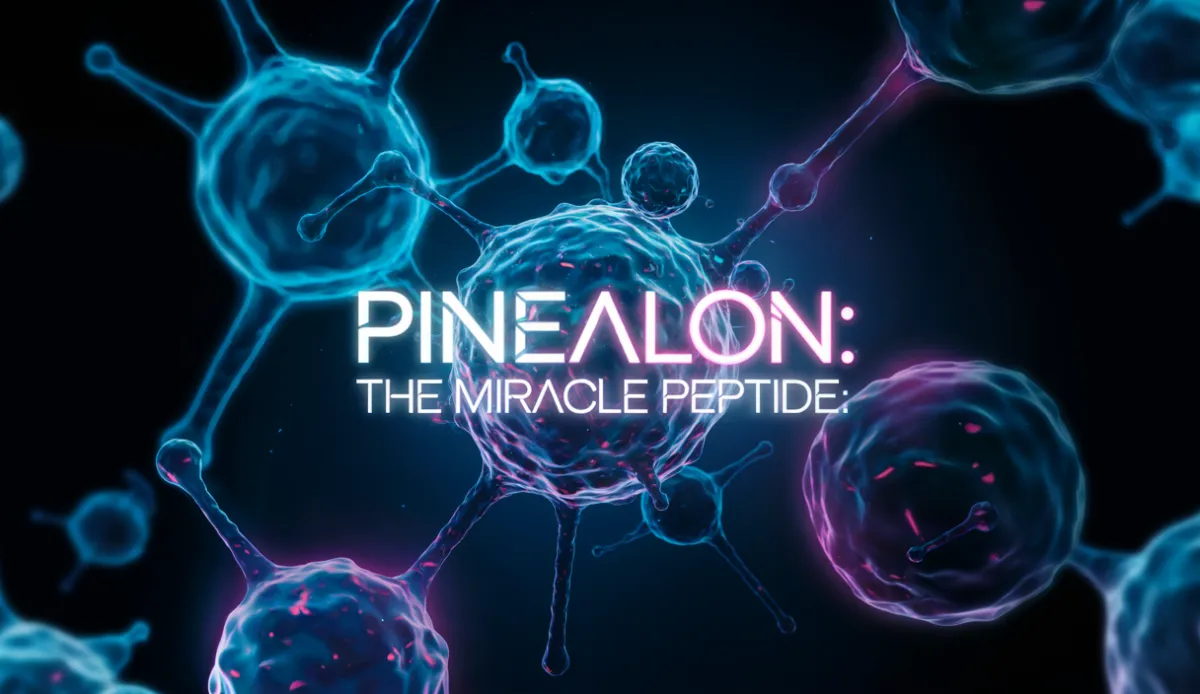
With the ever-increasing demands of modern society, from stress in the workforce to financial difficulties and health concerns, the ability to have a safe and effective cognitive enhancer becomes glaringly important.
Most people don’t believe this exists – they think of Neuralink and brain chips, technologies designed to merge man with machine. Or they assume there must be a negative trade-off for using substances to enhance your biological function. But not only does a safe and effective cognitive enhancer truly exist, it’s also one of the most overall health-promoting and performance enhancing molecules ever discovered.
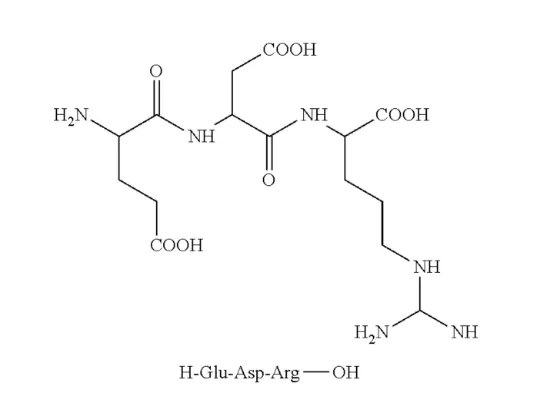
This molecule is called Pinealon – a tripeptide with the sequence Glu-Asp-Arg, discovered by Professor Vladimir Khavinson when he was analyzing the peptides present in Cortexin, a peptide extract from bovine and porcine brain cortex. It is also naturally present in Cerluten, a brain peptide complex from cattle, however its presence is low according to an HPLC analysis in the literature and further confirmed by a mass spectrometry analysis performed by us at the Peptide Science Institute.
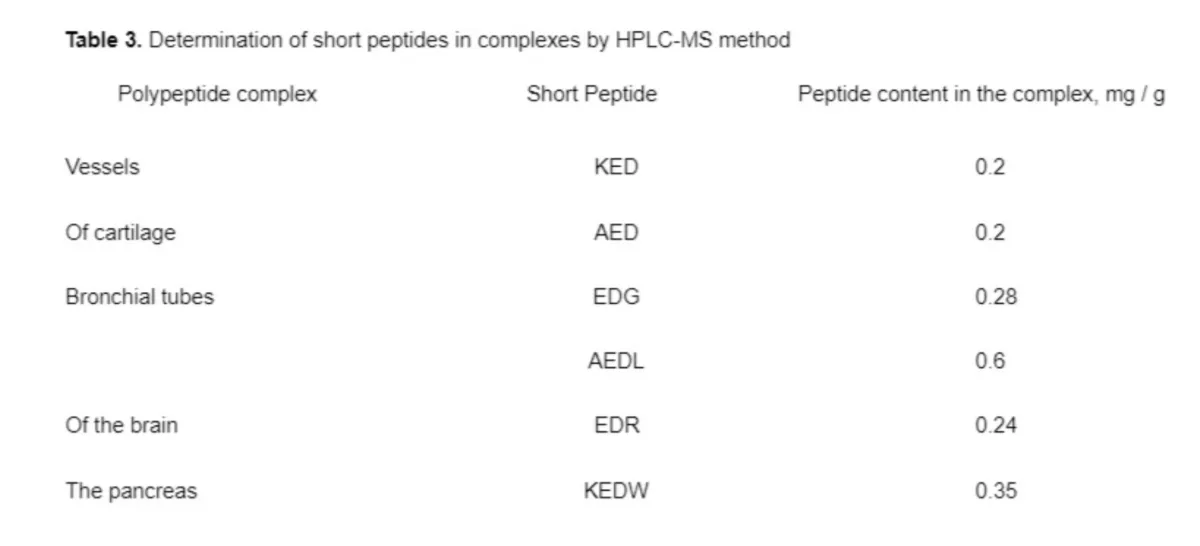
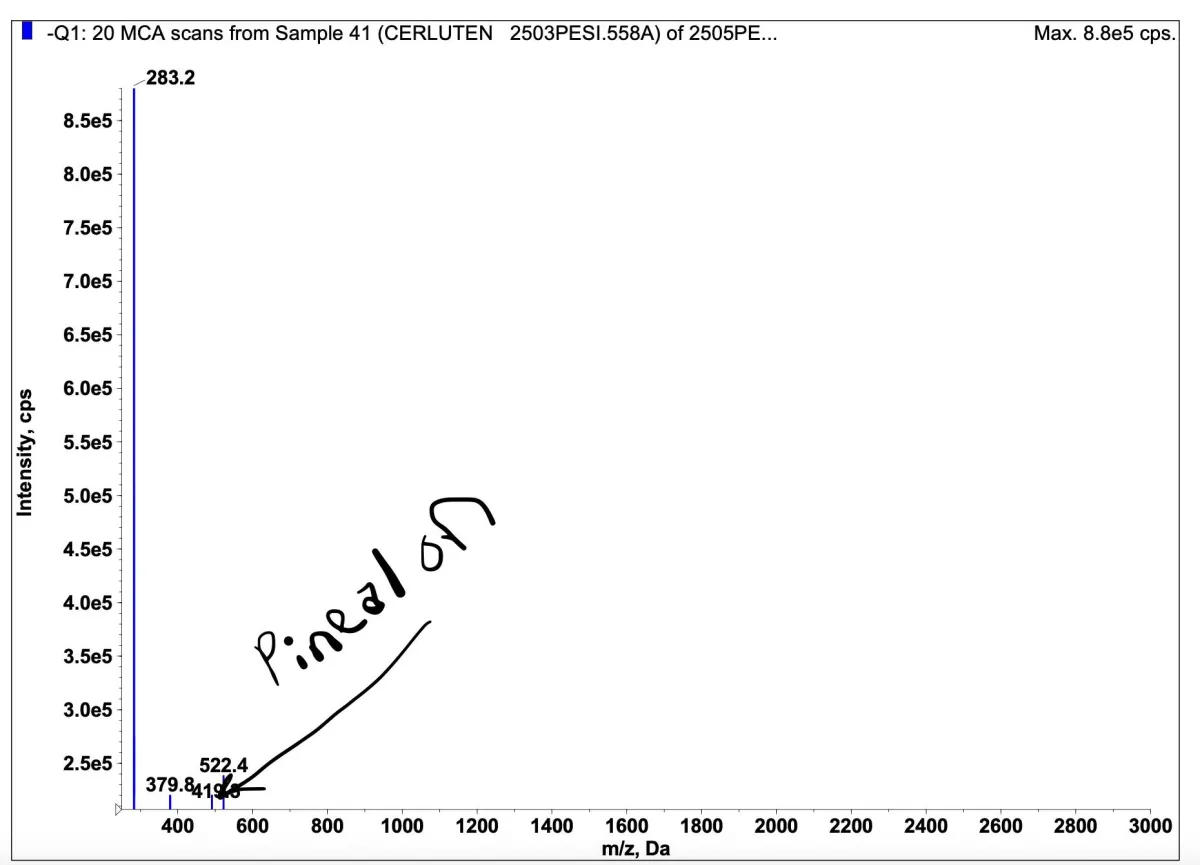
If you hear someone call Pinealon the pineal gland regulator, I recommend you run far, far away. People have been pushing this false claim for years because they don’t actually understand peptide science. Some have even claimed it regulates subcortical brain regions, when in reality, that’s what Epitalon, the actual pineal gland bioregulator, does. As the founder of the Peptide Science Institute, my mission is to get people real results with peptides, and that starts with putting out accurate information.
What’s so special about Pinealon is that it not only outperforms Cortexin in brain recovery and cognition in studies directly comparing the two, but also has benefits that extend from cognitive and physical performance enhancement in healthy individuals, to improving Alzheimer’s disease, Traumatic Brain Injury, Spinal cord Injury, managing diabetes, and anti-aging in some preliminary studies.
The benefits are so far-reaching that the power and effectiveness of Pinealon cannot be overstated. We are continually discovering more about this powerhouse peptide, but in this article I will show you the latest scientific advancements on how you can use Pinealon to rehabilitate your brain, reduce stress, enhance your cognition, reverse neurodegenerative diseases, improve your physical performance and overall become a higher functioning human being.
Cognition, TBI, and Neurodegenerative Diseases
Pinealon, given alongside patients’ usual therapies, restored long-term sequelae of head injury, post-stroke syndromes, vascular encephalopathies, and general cognitive decline in 44 individuals. The rate of a “good” clinical response was more than double that of the control group on standard treatments alone. Headaches, sleep disturbances, and rapid fatigue fell by 50–75 percent; cognitive test performance improved; and EEG recordings showed enhanced alpha-wave activity, suggesting reduced neural stress.
When it comes to brain regeneration, Pinealon has been shown to increase neurite outgrowth and synaptic connectivity by 37% in cultured rat cortex within 3 days¹¹. It outperformed Cortexin in both in vitro and in vivo studies. In vitro, Pinealon demonstrated superior regenerative capabilities as indicated by increasing the expression of Ki-67, a marker of cellular proliferation, and vimentin, a filament protein involved in neural repair ² . Additionally, Pinealon reduced apoptosis more effectively than Cortexin, as indicated by lower levels of p53 expression ³.

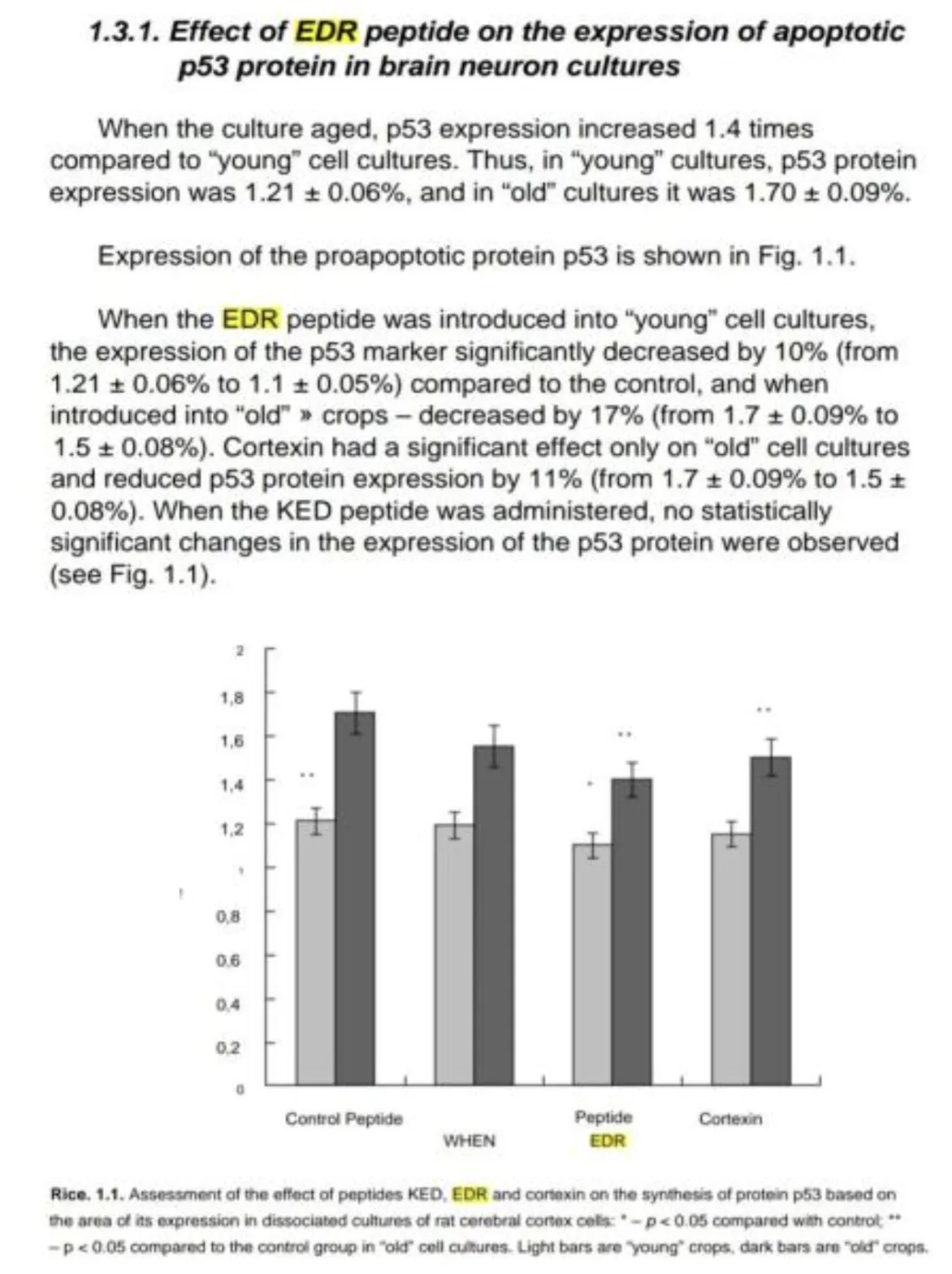
In vivo, Pinealon further validated its efficacy by enabling rats to perform better in the Morris water maze test compared to Cortexin. Consistent with these findings, Professor Vladimir Khavinson has asserted that Pinealon is capable of regenerating neurons in cases of traumatic brain injury where Cortexin and Cerebrolysin have not shown comparable results⁵.
Pinealon Assistance to the Brain
• Significantly improve intellectual markers in both young male wrestlers and older men⁶.
• Improve spatial orientation, heighten attention, and a 1.5x increase learning speed in aging rhesus monkeys⁷.
• Enhance morris water maze memory retention in mice even after inducing diabetes with streptozotocin ⁸.
• Improve psycho emotional stress and sleep in workers, such as among lorry drivers⁹.
• Improve memory, reduce headache intensity and duration, enhance emotional stability, and increase the quality of sleep in humans who had TBI that wouldnt respond to prior treatments¹⁰.
• Improved TBI symptoms in 59.4% of patients with cranial trauma, with 31.9% showing satisfactory results, and 8.7% experiencing no positive effect. Alpha brain waves were also improved on EEG suggesting an improvement in well being¹¹
• Protect rat offspring from prenatal hyperhomocysteinemia¹² and prenatal hypoxia¹³. In hypobaric hypoxia, it allowed them to remain conscious for twice as long as the control group¹⁴.
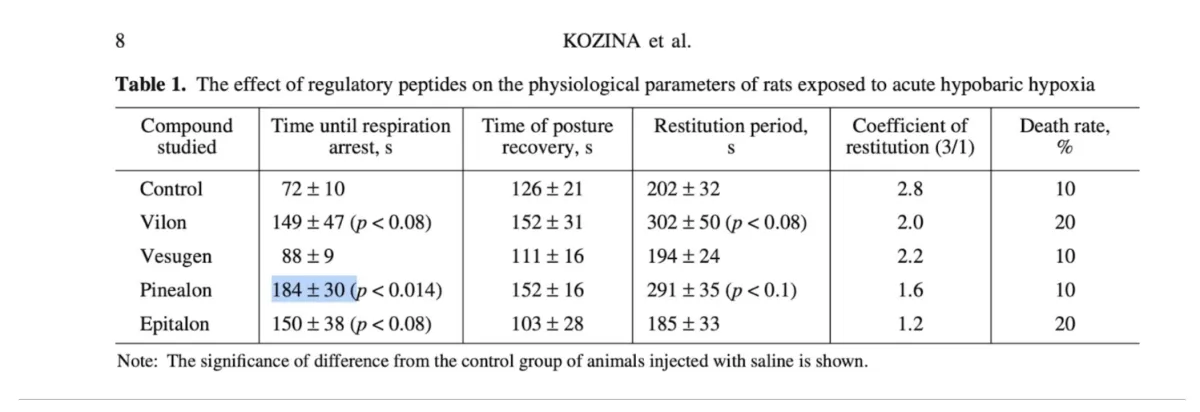
• Accelerated TBI recovery in rats, doubling learning capacity within 96 hours and fully restoring function by day 14. Treated rats showed superior motor coordination, muscle tone, and reflex learning, holding 2x longer on the rotarod than controls¹¹.

• Improved organic brain syndrome¹⁵ (This is a condition which manifests as memory loss, confusion, impaired thinking, emotional disturbances, personality changes. It could also occur from trauma, infection, disease, or some degenerative condition).
• Accelerated neuron and myelin regeneration, preserving synapses and dendritic spines. Treated rats showed increased ribosomes, polyribosomes, and repair activity, while controls had severe neuron degeneration, ischemia, and myelin destruction¹¹.
• Reduced lipid peroxidation in hypoxic rats by 50%, suppressed oxidative stress, and protected brain proteins from damage¹¹.
• Improved osmotic hemolysis in culture, enhancing red blood cell membrane stability, reduced lipoprotein oxidation, and reduced dead neurons in culture⁷⁷.
Pinealon is a highly neuroprotective peptide, with its efficacy demonstrated both in vitro and in vivo. In vitro studies revealed that Pinealon completely prevented cellular death when brain cells were exposed to hydrogen peroxide in its presence. Furthermore, it protected NMDA receptors from high homocysteine-induced toxicity, surpassing the efficacy of carnosine at much lower concentrations¹⁶. Pinealon is also patented for its ability to regenerate neurons, improve spinal cord injuries in rodent models, and enhance motor coordination¹⁷ ¹⁸.
Neurodegenerative Diseases
Pinealon has demonstrated remarkable potential in addressing neurodegenerative conditions. In an amyloid synaptotoxicity Alzheimer’s disease model, Pinealon completely reversed damage to mushroom spines in hippocampal cultures treated with Aβ42¹⁹. These benefits extend in vivo, as seen in 5xFAD mice, which exhibit impaired long-term potentiation starting at 4 months of age. A 1-month treatment with Pinealon partially restored LTP in this case.
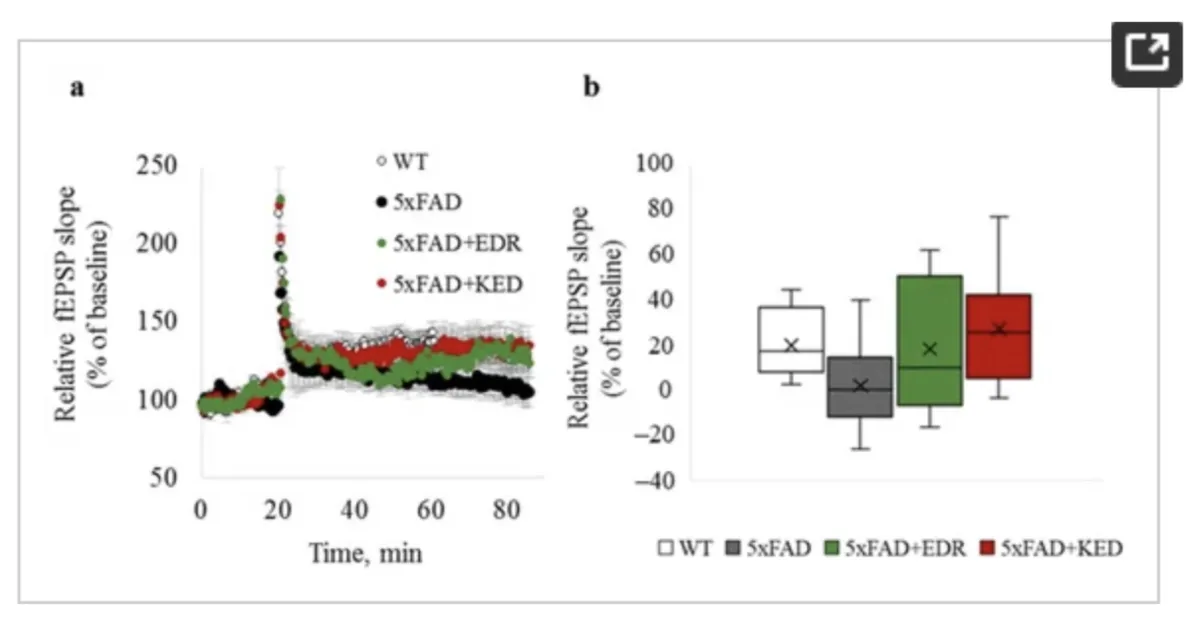
Pinealon also increased dendritic spine density by 14% in the CA1 region of the hippocampus and increased mushroom spine density by 25% in male mice, but it did not restore mushroom spines in female mice ⁷⁷. The chart below shows some of the effects seen in the study.
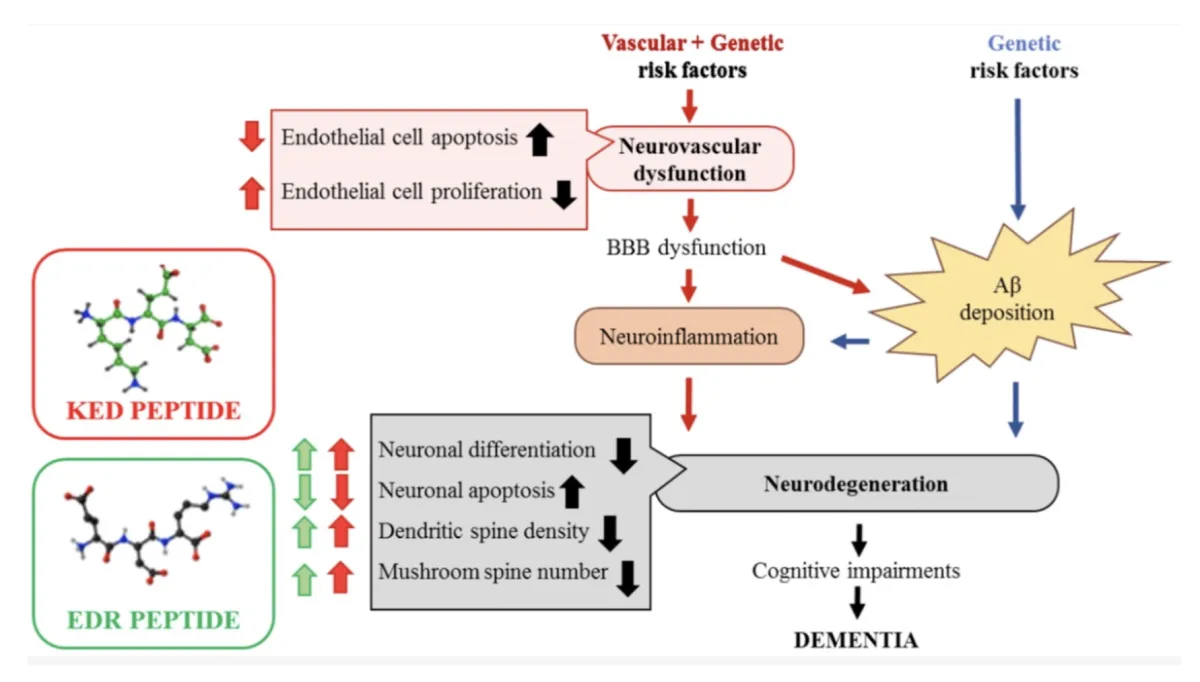
Pinealon's Assistance to the Athlete
When it comes to improving performance via peptides, Pinealon shows great promise. Its cognitive enhancing effects carry over to sports and activities that demand rapid decision making and reaction speed. This is supported by studies showcasing Pinealon’s ability to enhance reaction speed and overall sports performance, (especially when combined with Vesugen),²². This research was conducted by an author who holds the Guinness World Record in high-altitude river rafting²³. Pinealon was one of the 3 main peptides used by the Russian Rhythmic Gymnastics Team under the guidance of Irina Viner and Professor Vladimir Khavinson (see translated video of them here). In female judo athletes, pinealon lowered ESR, an inflammatory measure, and ALT and AST, both liver enzymes, while increasing the duration of static balance (the ability to maintain a single posture for an extended period) by nearly 2x ⁹⁰.
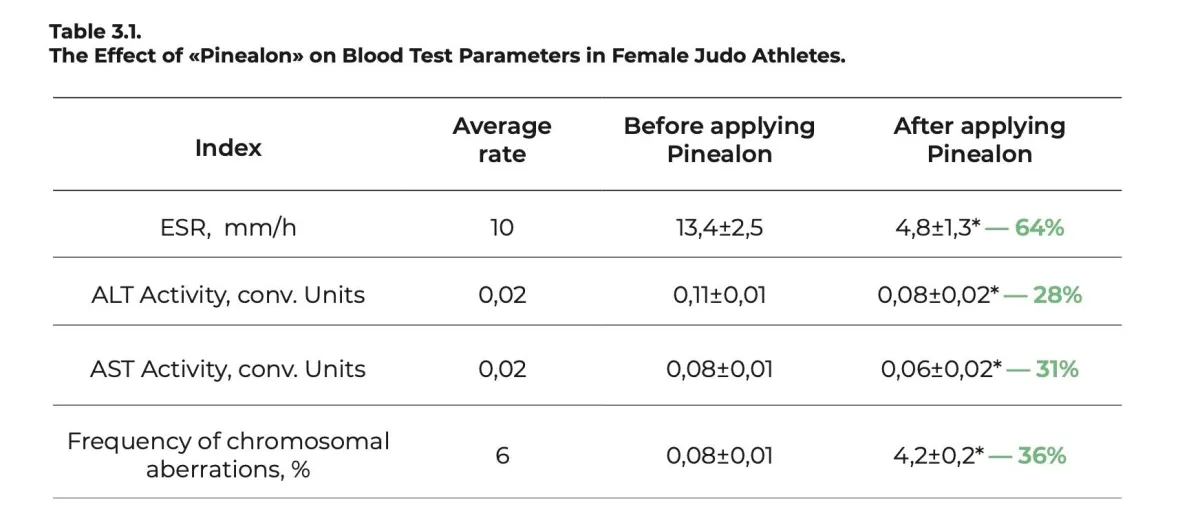
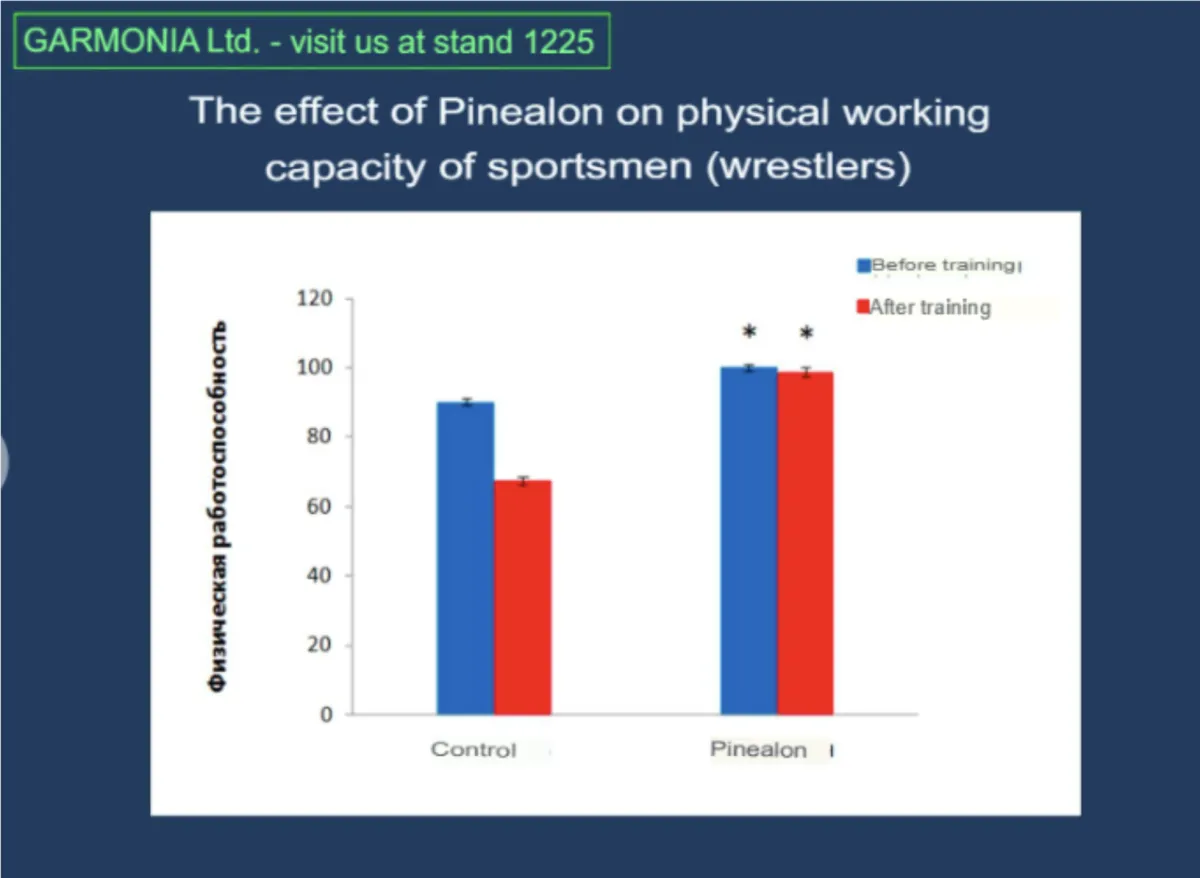
• Reduced heart rate in trained athletes by 10-12 beats per minute while maintaining the same power output during activity²⁵.
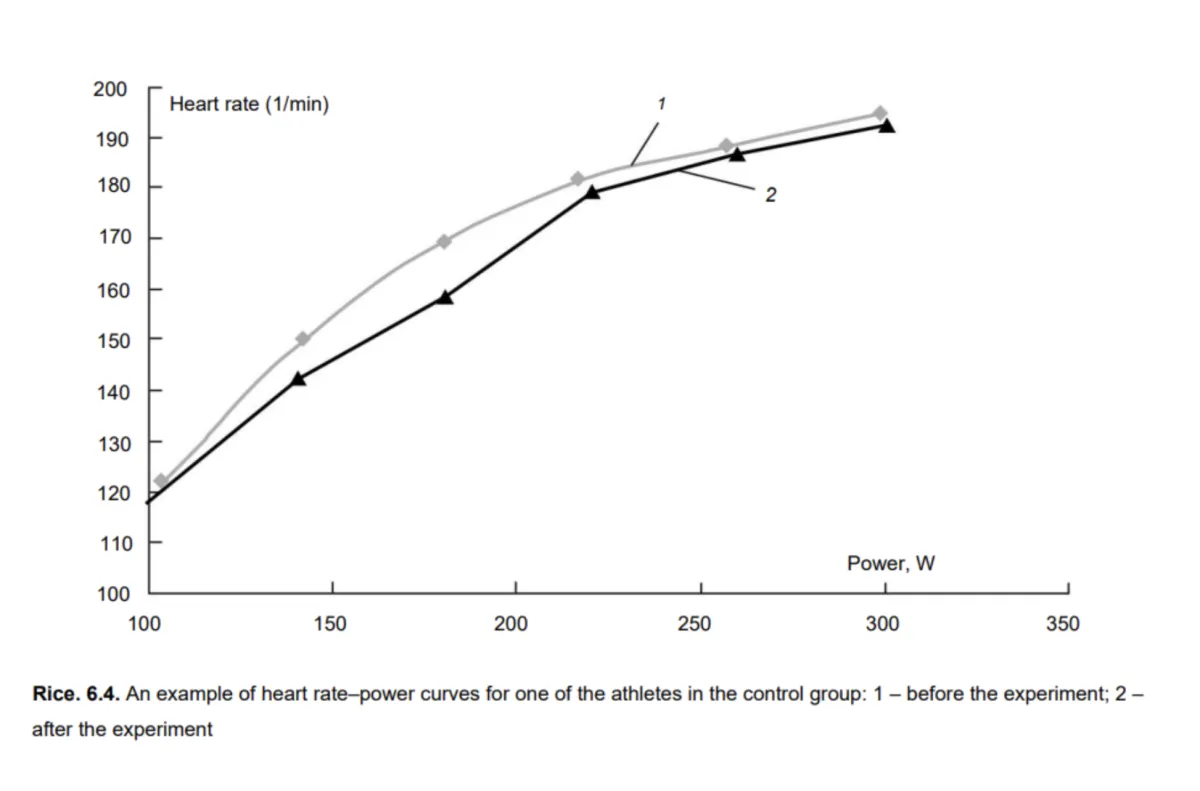
• Increased the maximum treadmill run time in rats by 254% within 10 days which surpassed the Soviet anti-hypoxiant drug Bemitil ²⁶. This was at a dosage of 75mcg/kg, which in mice converts to 150mcg/kg and humans

Pinealon achieves its performance-enhancing effects through several interconnected mechanisms. It activates irisin, PPARA, and PPARG, which enhance the production of adiponectin and its receptors, theoretically leading to increased levels of MOTS-c, a mitochondrially derived peptide. MOTS-c is known to boost AICAR and AMPK²⁷ and boost PGC1a, increasing mitochondrial biogenesis and NRF1 further promoting ATP production ²⁸, providing metabolic support, reducing NAFLD, improving blood sugar regulation and may benefit chronic fatigue ²⁹.
PPARA and irisin also enhance glucose utilization, improve insulin sensitivity and promote overall metabolic health ³⁰ ³¹. Additionally, Pinealon directly upregulates glutathione peroxidase through activation of the GPX1 gene³², which favours enhanced mitochondrial efficiency³³.
Pinealon as a Geroprotector
Pinealon demonstrates significant geroprotective properties, as evidenced by its ability to reduce biological age in healthy middle-aged and elderly individuals. A short 20-day course of two capsules per day resulted in an average biological age reversal of 3.9 years⁶.
Additionally, Pinealon's ability to protect against ROS and to enhance metabolic health through mechanisms such as increased irisin, PPARA, and PPARG suggests it would be beneficial for health and longevity. If Pinealon does indeed increase endogenous MOTS-c levels, which is supported by its mechanisms ³⁴ ³⁵ ³⁶ , it may further support lifespan extension as a polymorphism in the mitochondrial genome encoding MOTS-c has been linked to centenarian status in a Japanese population ³⁷ ³⁸.
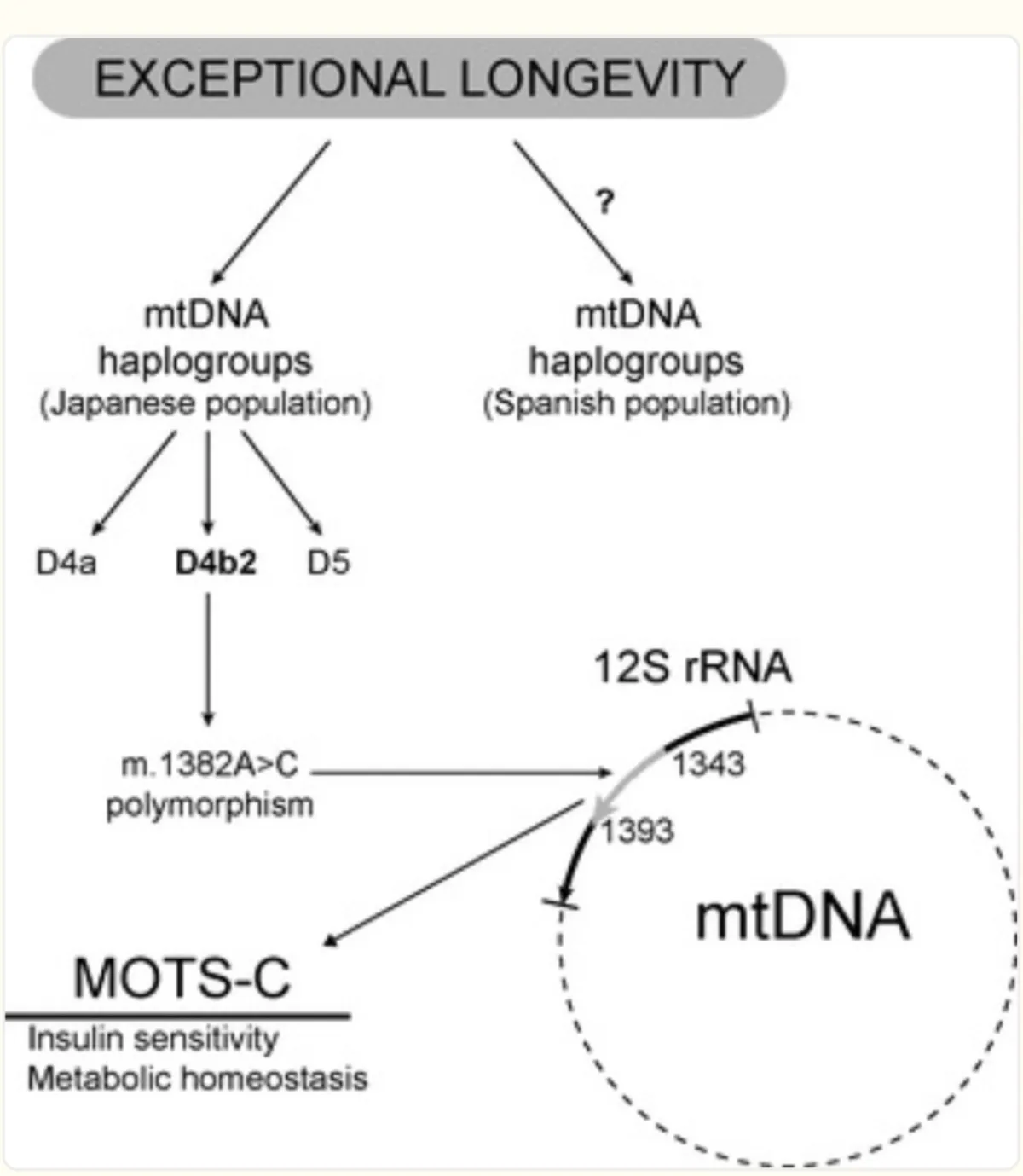
Pinealon Mechanisms of Action
The following are a list of genes that Pinealon is known to activate. GDF11, FKBP1B, PPARA, PPARG, HSPA1A, FNDC5/Irisin, Casp3, TPH1, NES, GAP43, APOE, SOD2, and GDX1. The chart below shows some of pinealons bindings involved in AD.
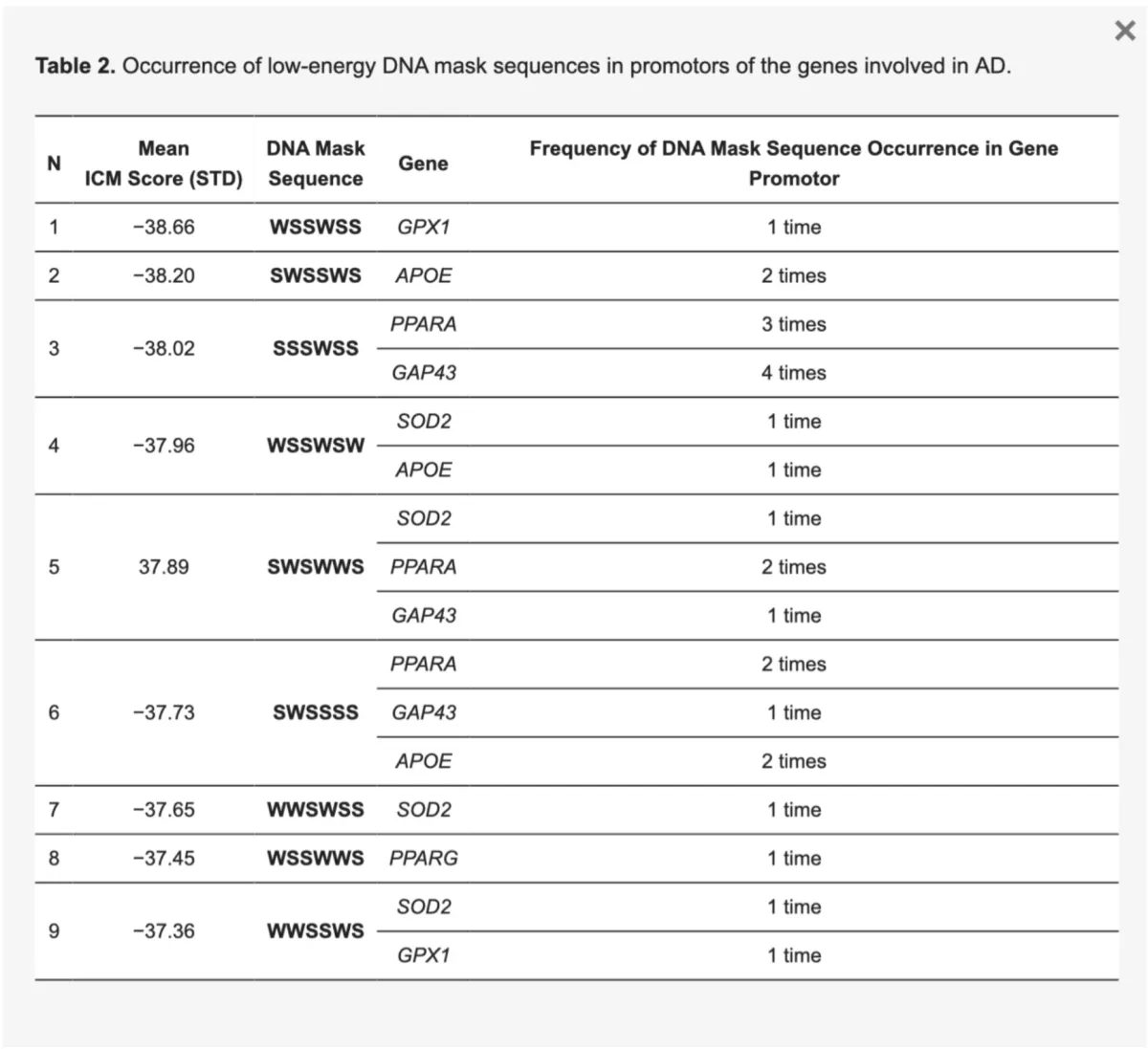
Some of the most critical ones responsible for Pinealon's neuroprotective, metabolic, regenerative, and anti-aging properties are discussed in detail below.
• FKBP1B
Pinealon increases FKBP1b³⁹ which has been shown to reverse age-related intracellular Ca²⁺ dysregulation and improve cognitive and memory impairments in aging rats. Additionally, it has been demonstrated to restore the expression of 872 out of 876 genes in the hippocampus of mice, shifting their expression in a direction opposite to that associated with aging. These genes are involved in structural categories such as the cytoskeleton, membrane channels, and extracellular regions⁴⁰.
• PPAR/A and PPAR/G
Pinealon significantly upregulates PPARA and PPARG genes in humans, which has been demonstrated to improve the performance of wrestlers.⁴¹ ⁴². These genes are strongly associated with athletic performance, with PPARG, in particular, being a promising target for benefiting spinal cord injury.⁴³ Polymorphisms in the PPAR genes, especially those associated with the "G" allele, result in decreased gene function and have been linked to reduced hand grip strength,⁴⁴ an increased risk of breast cancer,⁴⁵ and Alzheimer's disease.⁴⁶ Additionally, PPARA plays a critical role in regulating autophagy and clearing amyloid-beta plaques. It achieves this by increasing the activity of microglia and astrocytes around the plaques and enhancing autophagosome formation.⁴⁷ PPARA also regulates cholinergic-driven activity of midbrain dopamine through a mechanism involving α7 nicotinic receptors ⁴⁸.
• HSPA1A/HSP70
Pinealon upregulates HSPA1A (encoding heat shock protein 70) by approximately 3x in humans, though the specific dosage used in the study was not disclosed.⁴⁹ ⁵⁰ Heat shock protein 70 is associated with enhanced learning, as demonstrated in mice undergoing the Morris water maze.⁵¹ Its benefits extend to improving insulin sensitivity and reducing lipid accumulation, including within the brain.⁵²
HSP70 has demonstrated efficacy in improving wound healing in vivo ⁵³ and is essential for promoting proper androgen receptor function, ⁵⁴ preventing muscular dystrophy, and enhancing muscle hypertrophy ⁵⁵. It also supports spermatogenesis ⁵⁶.
One of its critical roles is preventing the aggregation of misfolded proteins, such as those implicated in Alzheimer's disease , Huntington's disease, and Parkinson's disease. This effect may be partially mediated by the suppression of CDK5, ⁵⁷ which also confers resistance to oxidative stress and increases SIRT1 ⁵⁸.
Interestingly, lower levels of HSP70 are associated with ADHD in children, ⁵⁹ suggesting that its upregulation by Pinealon could potentially benefit conditions like ADHD.
• FNDC5/Irisin
Pinealon increases FNDC5 gene expression by binding to five regions within its promoter. This gene codes for Irisin, a peptide with wide-ranging protective and regenerative effects. ⁶⁰ Irisin acts as a positive regulator of muscle growth, ⁶¹ restores nucleus pulposus cells in mice, preventing intervertebral disc degeneration,⁶² and protects against motor dysfunction in rats with spinal cord injuries. ⁶³
Irisin is also associated with increased telomerase activity, extending the Hayflick limit,⁶⁴ and upregulating SIRT1 ⁶⁵. Notably, SIRT1 selectively activates caspases in cancer cells without affecting healthy cells. ⁶⁶
Furthermore, Irisin stimulates mitochondrial biogenesis and mitophagy, ⁶⁷ prevents mitochondrial damage in Parkinson’s disease, ⁶⁸ provides robust antioxidant effects, and reduces ferroptosis in hypoxic conditions. ⁶⁹
• CALM1
Pinealon increases CALM1 promoter ⁷⁰, which codes for calmodulin. Calmodulin can bind to Gi proteins in the D2 receptor and increase its signaling through a cAMP mechanism, leading to an increase in D2 signaling ⁷¹.
• APOE
Pinealon binds within the APOE gene ⁷², which is involved in lipid metabolism and amyloid-beta clearance. Polymorphisms in this gene, particularly the APOE4 variant (heterozygous or homozygous), are associated with up to a 12x increased risk of Alzheimer’s disease due to reduced gene activity. By activating APOE, Pinealon can help counteract this reduced activity, potentially mitigating the effects of APOE4-related dysfunction. This aligns with Pinealon’s demonstrated ability to benefit Alzheimer’s disease in vivoˣ.
• GDX1/SOD
Pinealon’s antioxidant effects may stem from its ability to bind to three regions within the GPX1 gene, which codes for glutathione peroxidase, and regions within the SOD1 gene, which codes for superoxide dismutase. These genes neutralize oxidative stress and maintain cellular health ⁷³ (Table 1).
Additionally, Pinealon's activation of ERK1/2 ⁷⁴. further supports its antioxidant capabilities. ERK1/2 influences cellular redox balance by activating NRF2. NRF2 which has antioxidant effects downstream ⁷⁵.
Pinealon Dosing and Safety
Most studies on Pinealon have used capsules dosed at 100 mcg each, with a minimum effective dose of 200 mcg daily. Higher dosages, such as 400 mcg daily, have also been used with better results. Clinically, the 100mcg capsules have been used up to 9 per day, in 2-3 divided doses. Importantly, if using Pinealon capsules, they must be taken on an empty stomach to maximize absorption via PEPT and LAT transporters with minimal competition from dietary proteins. It will also enhance the efficacy if consumed with a full glass of water, as to dilute the stomach acid and reduce breakdown before uptake.
In rats, 75 mcg/kg was used in the treadmill test, where it outperformed Bemethyl. This equates to a human equivalent dose of 12.16 mcg/kg, or 851.2 mcg for a 70 kg human²⁶.
Additionally, Pinealon has been used in TBI studies in humans at 10 mcg/kg and 100 mcg/kg, with both showing positive results, though the higher dose produced better outcomes.⁷⁶.
In the Alzheimer's disease study in rodents Pinealon was administered intranasally at a human equivalent dose of approximately 2mg⁷⁷.
Therefore, for a 70kg human, we are looking at a large range between 200mcg- 7mg.
Toxicology studies in pigs found no adverse effects on organs or blood parameters, even at doses exceeding the therapeutic range by 1,000 times when administered daily for six months via injection¹¹.
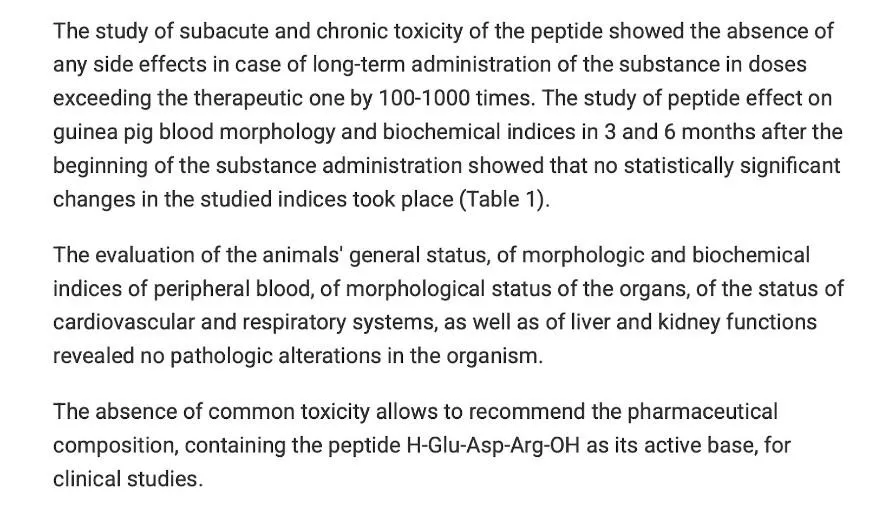
However, In my experience working with clients and testers, dosages above the top half of the range may occasionally lead to sleepiness, lower blood glucose levels, or mood disturbances.
Therefore, it is my personal recommendation that you stick with the first half of the range, which would be 200mcg-3.5mg for a 70kg human.
*All Human equivalent doses were calculated with the formula: HED = (Animal Dose/kg) × (Animal Km / Human Km)⁷⁸.
Conclusion:
Pinealon is a powerful peptide that shows promising results for cognition and neurodegenerative diseases, including TBI, where it has demonstrated actual neuron regeneration, including the restoration of spines and synapses. It also showed significant benefits in spinal cord injury in rodent models, enhancing muscle tone and coordination.
Pinealon additionally improves physical performance, including endurance and heart rate power curves in human studies, while also reducing some aspects of biological aging. Its mechanisms support the pathway through which endogenous MOTS-c, a mitochondrial peptide linked to longevity in the Japanese population, would increase in synthesis.
Additionally, Pinealon has been shown to improve psycho-emotional well-being in workers with high-stress jobs, making it an interesting candidate as an antidepressant. These wide-ranging benefits, combined with a strong safety profile and no documented toxicities, make Pinealon a promising peptide for promoting longevity, cognitive function, and overall health.
By Brenden Henry
January 17th 2025
Updated May 18th 2025
About The Author:
Do you know the truth about peptides? We believe human beings deserve to live happy, healthy and pain-free. To help you do that, we turned our $997 peptide mastercourse into the biggest, most comprehensive and most important book on peptides ever written. And we’re giving it away FREE HERE: https://peptides.link/book This is our gift to you. We want to help you live a BETTER, HEALTHIER and HAPPIER life! This book will help you cut through the noise, get answers to your questions and teach you more about peptides than you’d learn in a $52,000 biology degree. It’s written by Brenden Henry, the world’s number one authority on peptide science, Dr. Ali Mazloum and Dan Fox. You can get your free physical copy right now from the link above!
Do you have health issues you haven’t managed to solve, concerns about your body declining or a desire to experience the highest levels of biological optimization? You should know about the life-changing results we create with our peptide transformation programs. Brenden Henry, Dr. Ali, and our team of specialists are some of the most advanced biohackers on Planet Earth. We can help you achieve almost ANYTHING you want when it comes to your brain and body. Take the next step here: https://peptides.link/transformation
Want our most trusted & recommended peptide store? Go here: https://peptides.link/vitastream (use code CHANGEAGE10 for 10% off. They’re great quality, they have great service, they’re great people and they sell peptides made in the USA with 50% more ingredients than others!)
Do you want the FULL step-by-step roadmap to heal, enhance and transform your biology with peptides? This is the most comprehensive, complete, advanced, valuable and useful peptide class on Planet Earth (absolutely nothing else comes close). If you’d like to check this out, go here: https://peptides.link/mastery
Want to discover exactly what peptides are capable of and how they’re so life-changing yet so unknown? Get your free resource kit, The Life-Changing Magic of Peptides: How the Most Important Discovery In Modern Medicine Was Hidden From the World by clicking here: https://peptides.link/freegift
